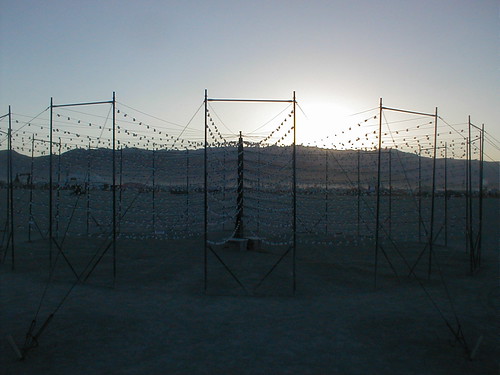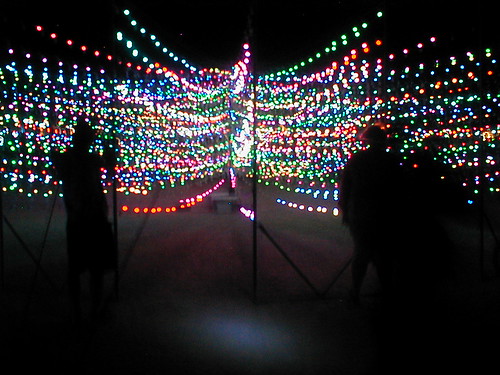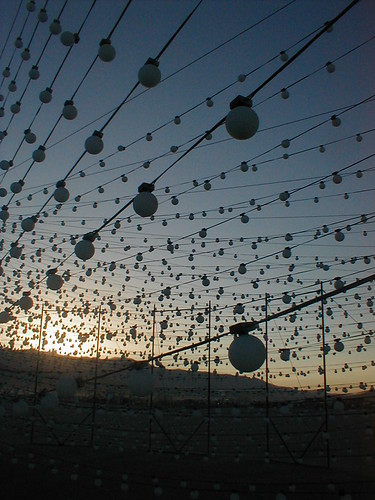Nocturnality
Because night time is temperate, it's the when the city is most alive. Music comes up at dusk, and plays till dawn. And because many people are out at night, much of the art is designed to be enjoyed by night, in the dark.
And what makes art fun at night? Fire. And lights.
One amazing piece was rather simple in its conception, yet beautiful and fun in its execution.
In the middle of the playa, were many poles in a circle around one central pole. From each perimeter pole to the central pole were strung wires with bulbs on them. The poles were arranged with regular degree spacing, and each pole had many strings, from top to bottom, also arranged at regular intervals. Each bulb had the capacity to generate many different colors.

The artist had created a 3-D co-ordinate system for displaying color and light. One could describe a bulb precisely through a few dimensions:
- Pole (degrees)
- Row (top to bottom)
- Column (interior to exterior)
- Color (which color the bulb displays)
The bulbs were then connected to a computer system which changed the bulbs according to various patterns to create many effects.
The piece became known as "The Ping Pong Balls" because of the bulbs. Title your work what you will, the community will name it for you.
One of my favorite display routines began with all the lights on the top row illuminated. Then, one by one, the light would "fall" down to the bottom row (rapidly lighting the corresponding light on the same column below it, and turning itself out, successively, until reaching the bottom row), where it would remain illuminated. Like leaves falling from a tree in autumn. It looked like the bulbs were falling off their strings. I think there was a normal probability distribution function in the algorithm, because at first, a few fell, but then many fell, until the last few fell. Probably assigns a random number in a probability density function to each bulb and uses that number to dictate the moment of falling.
I liked it because there was a simple, elegant, ordered mathematical structure out of which could emerge so many beautiful and fun patterns, all governed by some elegant math.
Still photos don't do it justice, because it wasn't about the static pattern of illumination, but the dynamic patterns that made it so fun to watch.
It was fun to listen to the crowd, pausing on their trek across the playa to ooooh and aaaah and sometimes giggle at the electric fireworks display.




<< Home